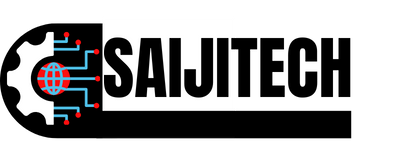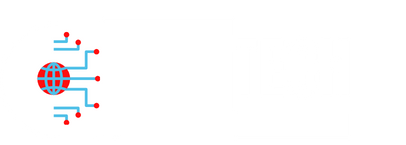Introduction: Explanation of TBA316389902634
Welcome to the fascinating world of TBA316389902634! As we dive into 2025, this innovative compound is capturing attention across various sectors. But what exactly is TBA316389902634? This unique identifier represents a breakthrough that has the potential to reshape industries and enhance everyday life. Whether you’re a curious mind or an industry expert, understanding TBA316389902634 will provide valuable insight into its significance in our rapidly evolving landscape. Join us as we explore its history, applications, advantages, and much more—there’s plenty to uncover!
History and Development of TBA316389902634
TBA316389902634 emerged from a need for advanced solutions in complex systems. Its development began in the early 2020s, driven by research teams across various sectors.
Initially, TBA316389902634 was considered a theoretical construct. Researchers aimed to explore its potential applications and implications. As data collection methods advanced, so did interest in this innovative concept.
By mid-decade, collaborations between academia and industry flourished. Developers focused on refining its functionalities and enhancing efficiency. Early prototypes showcased promising results, which sparked further investment.
As technology evolved, so too did TBA316389902634’s capabilities. The integration of artificial intelligence played a pivotal role in optimizing performance metrics. This evolution set the stage for broader acceptance across multiple industries.
The journey of TBA316389902634 reflects a continuous quest for knowledge and innovation within an increasingly interconnected world. Each step forward has paved the way for future advancements that promise even greater impact.
Applications of TBA316389902634 in Different Industries
TBA316389902634 finds its way into a myriad of industries, showcasing its versatility and adaptability. In the automotive sector, it enhances safety features in vehicles through advanced sensor technologies. This ensures accurate data collection for improved navigation systems.
The healthcare industry also reaps benefits from TBA316389902634. It aids in developing sophisticated medical devices that monitor patients’ health more precisely than ever before. Such innovations lead to better patient outcomes and enhanced care.
Moreover, TBA316389902634 plays a crucial role in manufacturing processes. Its application streamlines operations by optimizing supply chain management and reducing production costs.
In the realm of sustainable energy, this technology contributes to efficient resource utilization, promoting eco-friendly practices across various sectors. As industries evolve, the potential applications of TBA316389902634 continue to expand dramatically.
Advantages and Disadvantages of TBA316389902634
TBA316389902634 offers several advantages that make it appealing across various sectors. Its efficiency in processing data is noteworthy. Many industries benefit from its speed and accuracy, enhancing productivity.
On the flip side, there are disadvantages to consider. One major concern involves the cost of implementation. Smaller businesses may struggle with financial resources needed for integration.
Additionally, TBA316389902634 can pose compatibility issues with existing systems. This can lead to potential disruptions during the transition phase.
Moreover, reliance on this technology raises questions about security vulnerabilities. As more sensitive information gets processed, safeguarding data becomes increasingly critical.
While the benefits seem numerous, understanding these drawbacks ensures informed decision-making for organizations considering adoption of TBA316389902634.
Future Potential and Predictions for TBA316389902634
The future of TBA316389902634 is brimming with possibilities. As technology advances, its integration into various sectors seems inevitable. Industries are already exploring innovative ways to harness this powerful tool.
Predictions suggest a surge in demand for TBA316389902634 as businesses recognize its potential for enhancing efficiency. Automation and artificial intelligence could play significant roles in expanding its applications.
Experts foresee a shift towards sustainability, where TBA316389902634 can contribute to greener practices. This aligns with global efforts toward reducing environmental impact.
Research and development will likely lead to breakthroughs that enhance performance. These advancements may open doors to new markets, fostering competitive advantages.
Collaboration between companies could accelerate innovation cycles surrounding TBA316389902634. Partnerships might emerge across industries, creating synergies that amplify its effectiveness and reach.
Impact on Society and Ethical Considerations
The emergence of TBA316389902634 has sparked significant discussions regarding its societal impact. As it integrates into various sectors, we witness shifts in job dynamics and skill requirements. This technology could displace traditional roles while simultaneously creating new opportunities.
Ethical considerations are paramount. The potential for misuse looms large, raising questions about privacy and security. Ensuring responsible use is vital to prevent harm.
Moreover, accessibility remains a critical issue. Not everyone benefits equally from advancements like TBA316389902634. Bridging this gap requires intentional efforts from policymakers and industry leaders alike.
Public awareness plays a crucial role too. Society must engage in conversations around the implications of adopting such technologies to foster informed decisions and ethical practices across all levels.
Balancing innovation with responsibility will shape how TBA316389902634 influences our lives moving forward.
Conclusion: The Continued Evolution of TBA316389902634
The journey of TBA316389902634 is far from static. As technology advances, new applications and enhancements emerge. This compound continues to adapt, reflecting the dynamic nature of various industries.
Innovations are on the horizon. Researchers explore uncharted territories where TBA316389902634 can play a critical role. Its versatility opens doors to exciting possibilities in sectors such as healthcare, manufacturing, and sustainability.
Moreover, public interest grows alongside technological advancements. Communities are becoming increasingly aware of how TBA316389902634 influences their lives daily. Conversations around its ethical implications spark engagement among consumers and businesses alike.
As we move forward into 2025 and beyond, the trajectory remains promising for TBA316389902634. The interplay between science, industry needs, and societal values will shape its evolution in fascinating ways that warrant close observation.
FAQs
The landscape surrounding TBA316389902634 continues to evolve rapidly. As industries adapt and integrate this technology, its impact becomes increasingly profound. The versatility of TBA316389902634 positions it as a key player across various sectors, hinting at a future rich with innovations.
Curiosity often brings questions about new technologies. Here are some frequently asked queries regarding TBA316389902634:
What is TBA316389902634 primarily used for?
TBA316389902634 is utilized in several applications, ranging from advanced manufacturing processes to innovative consumer products.
How does TBA316389902634 compare with similar technologies?
Compared to other technologies, TBA316389902634 offers unique advantages such as efficiency and scalability but may present challenges in specific use cases.
Are there any risks associated with using TBA316389902634?
Like many emerging technologies, there can be potential risks involving safety or ethical considerations that must be addressed by industry stakeholders.
What industries benefit most from integrating TBA316389902634?
Industries like healthcare, automotive, and finance have found significant value in adopting the capabilities of TBA316389902634.
As we look towards the future, continuous exploration into the implications of this technology will shape our understanding and usage of it moving forward.










